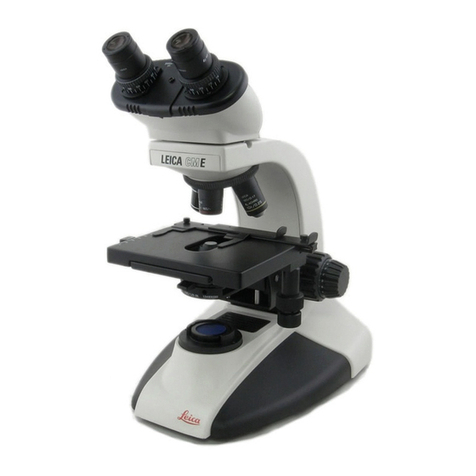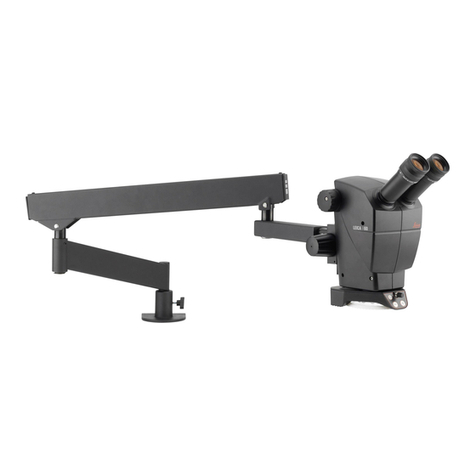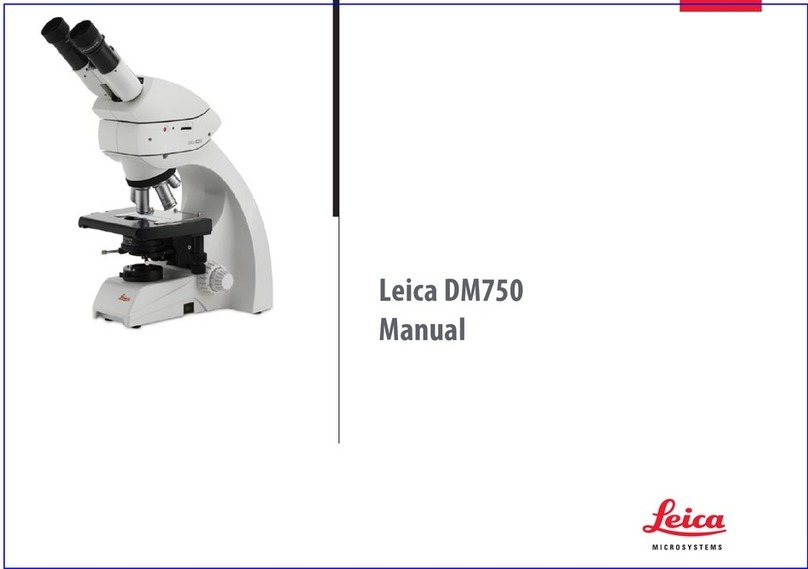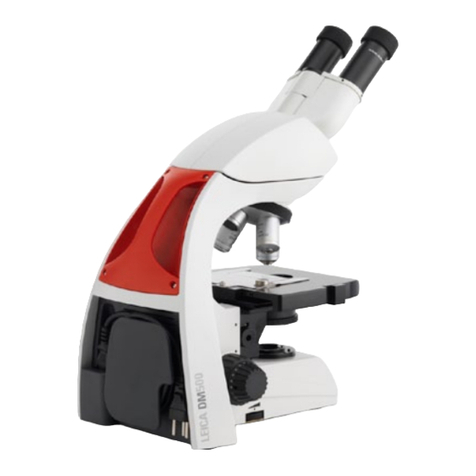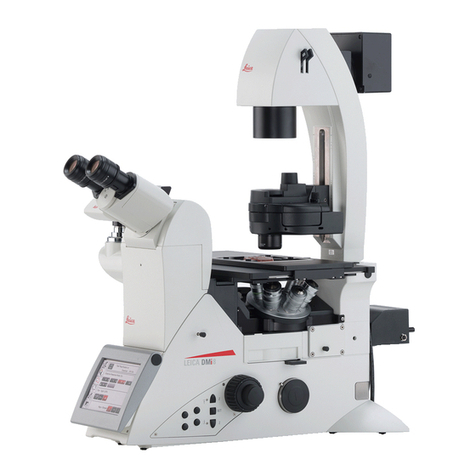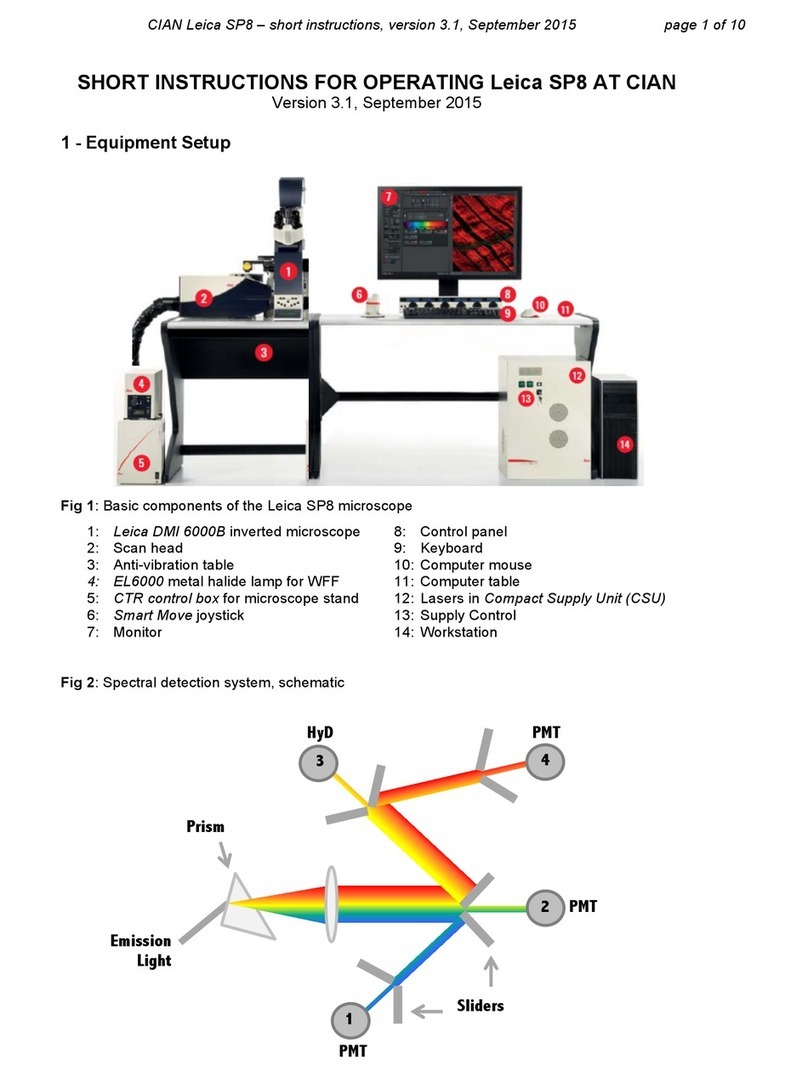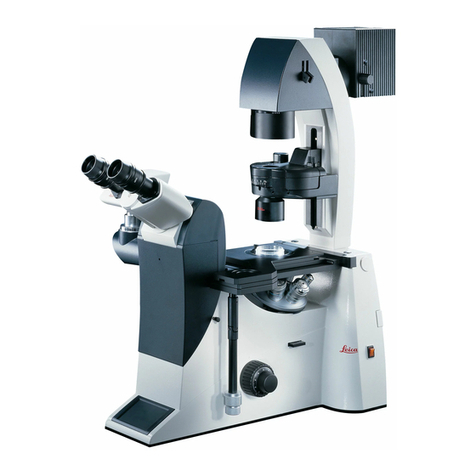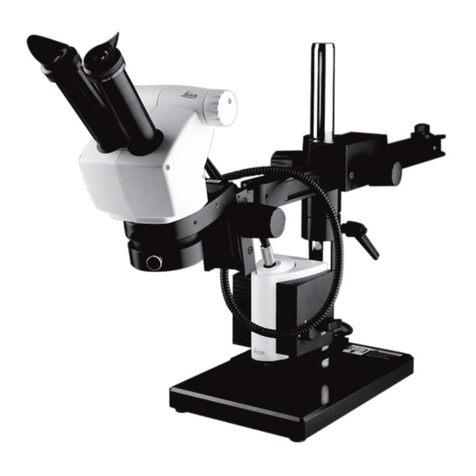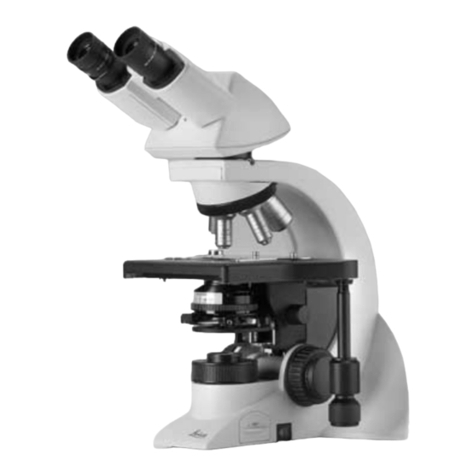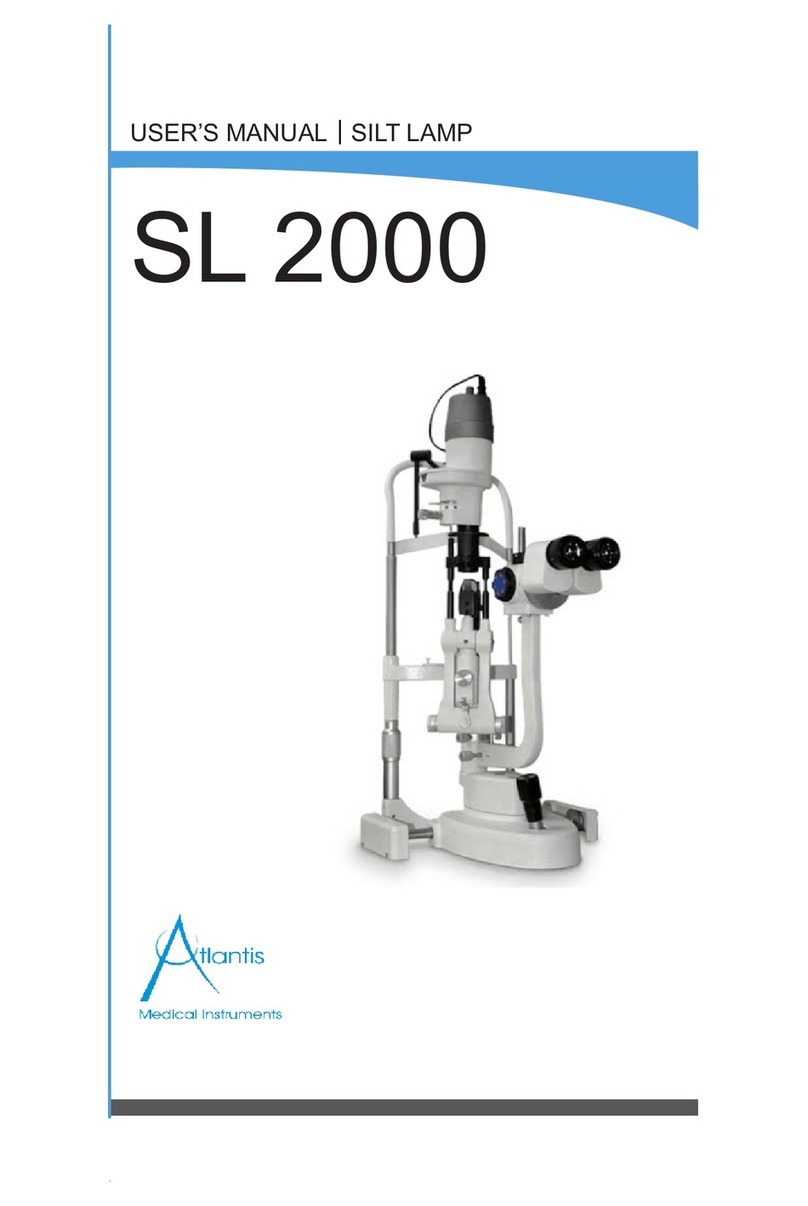
7
General safety information
Only fuses of the specified type and rating may
be used as replacements. Never use repaired
fuses or short-circuited fuse holders.
Attention!
The instruments and accessories described
in this manual have been safety-tested and
checked for possible hazards.
Before modifying the instrument in any way
or combining it with non-Leica products not
covered by this manual, please always
contact your local Leica representative or the
main factory in Wetzlar!
Any unauthorised interference with the
instrument or use of the instrument for
applications for which it is not designed will
automatically void any warranty claim!
This instrument of Safety Category I has been
built and tested according to EN 61 010-1/
IEC 1010-1, Safety Standards for Electronic
Measuring Instruments, Electronic Regulators
and Electronic Laboratory Instruments.
Attention!
To maintain this condition and to ensure safe
operation, the user must note and adhere to
the directions and warnings contained in this
manual.
The mains plug may only be inserted into a
grounded socket.
The protection must not be jeopardised by using
an extension cable without ground conductor.
Any break in the ground conductor within or
outside the instrument or loosening of the
ground connection can render the unit
dangerous. Intentional severance is prohibited!
Attention!
Accessory devices connected to the
microscope which have a separate and/or
different power supply should be brought to
the same ground potential by connecting
them to the same grounding system. Contact
the service department in case of an
ungrounded mains supply .

